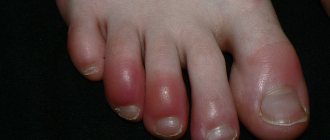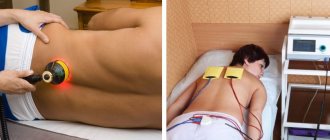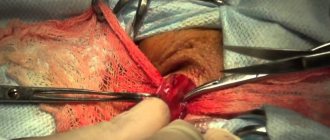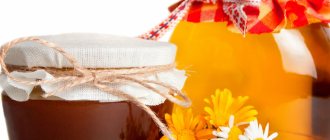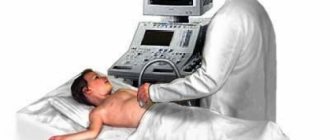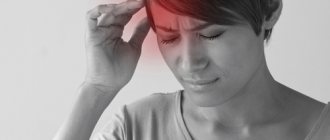Treatment with leeches does not lose popularity. We often hear from fans of unconventional methods that these unattractive creatures heal a variety of ailments. Is this really so and why there is still no alternative to the procedure, we discussed with Marina Korotka, a reflexologist at the Republican Center for Medical Rehabilitation and Balneotherapy.
Photo: medbooking.com
History of hirudotherapy
The history of hirudotherapy goes back more than two thousand years. Leeches were used for treatment in Ancient Greece, India, Egypt, and China. There is a legend that it was thanks to leeches that Queen Cleopatra managed to get pregnant from Julius Caesar. After this, even on the walls of the tombs of the pharaohs of Egypt, images of leeches began to appear.
In the Middle Ages, it was discovered that hirudotherapy helps with obesity. And then the problem of large excess weight in many countries was almost the most important. During excavations in the materials of ancient libraries, manuscripts were found in which doctors recorded amazing results: people lost weight up to 10 kg without difficulty, and their well-being only improved.
With the help of leeches, heart problems, dizziness, shortness of breath, and infertility were treated. Hirudotherapy was so popular that leeches were even included in the paintings of Renaissance masters, such as Botticelli.
The heyday of hirudotherapy occurred in the late 18th and early 19th centuries. It was used to treat almost everything. During this period, leeches began to be bred on an industrial scale and exported between countries. Even Pirogov considered hirudotherapy the strongest method of treatment. Leeches were sold in all pharmacies.
However, all this time, doctors considered the main “power” of leeches to be the bloodletting effect. And only in the 90s of the 20th century, scientists proved that it is not only responsible for healing. The main healing factor is leech saliva, which contains more than 15 bioactive substances with unique properties. The most interesting thing is that so far scientists have not been able to synthesize a similar substance, although hundreds of millions of dollars are allocated for research and work on its creation in England, Israel and the USA. Even genetic engineering technologies do not help. Leech is officially recognized as a medicine and is included in the Russian register of medicines. In all countries of the world, hirudotherapy is used for the treatment and prevention of many diseases, and the main advantage of this technique is general improvement without complications.
Regardless of the psychological or psychosomatic type of a person and the type of his illness (in the absence of the restrictions listed above), he can be treated with a restorative, preventive course of home hirudotherapy.
A health or preventative course of hirudotherapy is not intended to treat any disease. Its main purpose is to prevent the occurrence of various pathological processes, activate the immune system, normalize metabolism, rejuvenate the body, in other words, improve overall health. Based on this, we can say with confidence that it is indicated for all people who have no contraindications to hirudotherapy, and especially for those whose age has exceeded 30 years. There will always be reasons to undergo a health course of hirudotherapy and thereby improve your health, here are the main ones: - many doctors claim that modern people, whose age has passed 30 years, already have in their bodies the onset of some hidden chronic diseases that have not yet make themselves known; – with age, stagnation begins to develop in the human body, in most cases this is what gives rise to the development of many pathological processes. There is no particular point in conducting a course at an earlier age, except for those cases when “the time has come” for treatment and you already have diseases for which hirudotherapy can be used as both the main and an auxiliary method of treatment. The best time to place leeches is considered to be autumn and spring; it is during this period that leeches are easiest to place. It is advisable to carry out a health-improving course of hirudotherapy once a year. Ideally twice a year. But even if you do one course over two or three years, you will provide invaluable benefits to your health. If you have doubts about the advisability of such a course, then try to overcome yourself and just take a health improvement course. Approach this issue as a skeptic and you will definitely be convinced of the benefits of hirudotherapy. It also makes sense to raise the issue of massage before hirudotherapy sessions. The fact is that a massage will not be superfluous, since it will improve blood flow to organs and muscles, which, in turn, will contribute to a more active flow of leech saliva enzymes into the human body. Massage before hirudotherapy sessions in some cases enhances the healing effect significantly. For a healing course you will need 30–40 leeches, it will take up to 4 weeks, which will amount to 7 sessions of hirudotherapy with a frequency of 3–4 days between sessions. It is advisable to begin this course by placing leeches on the liver projection area, located on the right side just below the hypochondrium. The liver is our biological factory, which supplies our body with necessary substances around the clock, many of which do not come from food. In this case, it is better to use a medical jar or a small glass to place leeches. In a limited space, leeches themselves will find the place they need to suction. Experts believe that leeches bite the skin exclusively at biologically active points, the so-called acupuncture points. This happens because at these points the local body temperature is a tenth of a degree higher than in other parts of the body. And leeches react primarily to temperature changes, even if not significant, “believing” that there will be more blood in a warmer place.
The first step is to place leeches in the liver area. Most modern hirudotherapists recommend placing leeches on the liver projection at home first. This has to do with three things. Firstly, the need for leeches is due to the fact that, first of all, it is necessary to identify individual intolerance. Secondly, the place is accessible and you can easily see how the leech behaves, how much blood flows from the wound, which is then more convenient to care for. Thirdly, placing leeches in the liver area is aimed at normalizing the functioning of the liver itself. Biliary dyskinesia is a disease of modern people. Today it occurs in 85% of seemingly healthy people. But it is only at first glance that people seem healthy. If you look closely into their eyes, you will notice that their whites have a slightly yellowish or grayish tint - this is an indicator of congestion in the liver. Congestion in the liver has a very negative impact on human health. They cause a whole bunch of health problems: they lead to cardiovascular diseases, varicose veins, urological and gynecological diseases. Therefore, we can say that by arranging liver prevention, you help your body eliminate in advance a number of negative consequences from biliary dyskinesia. The projection of the liver is located under the right lower rib. Wipe the area of skin selected for placing leeches with gauze, after dipping it in warm water. Transplant the required number of leeches for a hirudotherapy session in advance into the consumable vessel from which you will place them. When replanting leeches, pay attention to their ability to contract (a prerequisite for their good quality). The leech is placed on the palm and the fingers are squeezed - its body immediately contracts, becomes dense and elastic. Take an ordinary glass medical jar (or a small glass) and place three or four leeches from the supply jar into it. The jar for placing leeches must be transparent so that you can see how the leeches behave inside it. It is best for the patient to take a supine position during the first session. Now bring the jar of leeches to the place where you will place them: on the projection of the liver. With a quick movement, turn the jar of leeches over and press it firmly against the patient's body. Make sure that the edges of the jar are pressed tightly against the patient's skin, otherwise the leeches will try hard to crawl out of your jar. The leeches must “understand” that they need to bite and suck in a limited area of the skin located under the jar. Hold the jar upside down (you can even secure it temporarily with a medical adhesive tape) until you see the leeches firmly attached to the skin. This is not difficult to determine: the leech’s head freezes motionless, and its body begins to pulsate smoothly, which means that the leech has begun to absorb blood. After the leeches are firmly attached, you can carefully remove the jar. If the leech is strongly attached to the jar with its rear suction cup, gently help it with your finger to “break away” from it. Don't be afraid, leeches don't bite with their back sucker. During a session, leeches sometimes “sweat”, this is due to the fact that leeches actively process the sucked blood and dump excess fluid out. Sometimes (quite rarely) blood oozes from the wound even while the leech is sucking blood. Therefore, carefully place a small piece of gauze or bandage “under the body and on top” of the sucking leech. This is your patient’s first hirudotherapy session, so after sucking on the leeches, 15–20 minutes later, without waiting for them to be completely saturated, begin removing the leeches using a swab soaked in iodine or alcohol. Place this swab against the leech's head and hold it for a while. The leeches will not particularly resist and will immediately fall off the bite site. Using tweezers, place the leeches in a separate glass jar or plastic bag, be sure to close them so that the leeches do not scatter throughout the house, and quickly begin treating the wound. Wipe the skin around the wound with a cotton swab dipped in alcohol. Use a new swab for each wipe. Apply another clean cotton swab lightly moistened with alcohol to the wound. It is better to secure the tampon with a 30 mm wide medical plaster, applying it at least vertically and horizontally. Additionally, you can bandage this area around the body; this will press the tampon more tightly to the body. The surest way to help protect clothes from traces of blood: secure a sanitary pad or waterproof baby wipe over a cotton swab. If blood oozes heavily and you feel that the tampon is wet through, after an hour and a half it must be replaced with a new one. As a rule, one change of tampon is enough. Typically, bleeding from the wound stops after four to six hours. As soon as you feel that the blood has stopped leaking, you can carefully remove the tampon and treat the wound and a small space around it with iodine, and then apply a lightweight bandage to the wound for a day. If after 24 hours the wound is not bleeding, you can take a shower. After a shower, do not forget to make an iodine mesh on the wound itself and around it. In many patients, a few hours after a hirudotherapy session, the bite sites begin to itch very much. The easiest and most affordable way to get rid of this is an iodine grid. You can do it in advance, without waiting for the wound to “signal” you with restless sensations. Despite the fact that the leech bites through the skin easily, like a mosquito - barely noticeably pierces it with its miniature two hundred and seventy teeth - a kind of identification mark, similar to a logo, will “show off” on a person’s skin for some time after the session. This is a leech bite mark. As a rule, it disappears five or six days after hirudotherapy. Professional hirudotherapists know well that by the color of the blood that is released from the wound after removing the leech, one can judge the amount of stagnation or inflammatory phenomena in the part of the body where the leech worked. It is believed that dark blood indicates severe inflammation or chronic disease. As a rule, this type of blood appears only after the first two or three placements of leeches. Lighter blood shows that there are fewer toxins in a sick body, and its scarlet color means that your body has been significantly cleansed. The first session of home hirudotherapy is now over. In four or five days it will be time for the second session. “What now to do with the thick leeches that were actively sucking blood and are now in the bag?” – a question may arise. Leeches are usually a one-time medicine. It is best to destroy them after the session. No matter how much you feel sorry for them, mentally thank them for the good they did and dispose of them. There is one interesting observation. Several hirudotherapists did not destroy the leeches after they had sucked human blood, but placed them in a jar of water and decided to observe the behavior of these leeches. Observations have shown the following: the blood of most people is so polluted - both with medications, and emissions of toxic substances into the air, and food with all kinds of food additives (taste, color, etc.) that all leeches soon die after each of the first three sessions. And only after completing the fourth session of the preventive course of hirudotherapy, the blood in the human body is slightly purified, and the leeches remain alive. Several days passed. If the bleeding has stopped two or three hours after the leech has “fallen off” the wound, the second session can be carried out three to four days later. If the blood flowed for more than three hours, do not rush into the second session: conduct it in five to six days. Your patient should calm down and make sure that the bite of a medicinal leech is rather pleasant and useful. Perhaps he has already felt the positive effect of hirudotherapy: the body has strengthened, strength and confidence in protection from all sorts of adverse environmental influences have appeared.
The second session of the general preventive course of home hirudotherapy is the placement of leeches on the coccyx area . This area for placing leeches is very important and is used in the treatment of many diseases, including hemorrhoids, and in the fight against inflammation of the uterus and bladder. To place it in the coccyx area, 2 leeches are used. Sometimes, instead of the coccyx, leeches are placed on the Michaelis diamond zone; in this case, four leeches are used. Session duration is 20–25 minutes. Body position – lying on your side, you can also sit. The technique for placing leeches is the same: – wipe the skin in the area where you plan to place the leeches with a cotton swab or bandage soaked in warm water; – using tweezers, place the leeches in a medical jar; – turn the medical jar with leeches onto the tailbone area and wait until all the leeches are attached; – carefully remove the medical jar; – wait 20–25 minutes, then proceed to remove the leeches.
Perhaps during this time the leeches themselves will get enough and crawl away. If not, remove them with an alcohol swab. Collect thick leeches that have drunk blood in a bag or jar, close these leeches tightly. Place a cotton swab on the wound, a sanitary pad on top, and secure them with a medical plaster. Throw away the leeches. Rest.
The third session of the general preventive course of home hirudotherapy is the kidney projection zone. For kidney disease, hirudotherapy is especially indicated in the treatment of chronic pyelonephritis, chronic renal failure and the consequences of traumatic kidney injury. Hirudotherapy also helps with chronic glomerulonephritis, nephroangiosclerosis, diabetic kidney damage and in combating the consequences of other metabolic and inflammatory diseases. Leeches are also effective for the treatment of pyelonephritis in patients with a single kidney. However, it is not always possible to use leeches for pyelonephritis. This is impossible if the patient has impaired urine flow or there is blockage of the ureter with stones. You should also not use leeches for hemorrhage in the kidneys. However, today you are a healthy person , you are scheduled to continue the preventive course. It is better to conduct the third session of hirudotherapy four or five days after the second session . You have already gained a little experience and clearly remember everything you need. The technique of placing leeches is also fresh in my memory. The area for placing leeches is on the right and left on the projection of the kidneys. The patient's position is lying on his stomach or in a sitting position. For example, you sat on a stool at the table and, in order not to strain, you can lean on the table, having first placed a large pillow in front of you. Place three leeches on each kidney projection zone. The duration of the third session is approximately 30–40 minutes; you can allow the leeches to be satiated to the end. At the end of the session, tidy up the wound and throw away the spent leeches.
The fourth session of the general preventive course of home hirudotherapy is the placement of leeches on the projection of the heart. In life, for cardialgia, pain in the heart of a non-ischemic nature, leeches are placed from 3 to 8 pieces on the heart area and collar area. The first 2-3 procedures every other day for different areas. Then 2 times a week until the pain subsides. If you have angina, you need to consult a cardiologist, as well as a fresh cardiogram. This will allow you to avoid missing myocardial infarction against the background of pain. Leeches in the same quantity as above are placed: on the collar area on the right and left in equal numbers, in the interscapular space at the level of the 5th-6th thoracic vertebrae on both sides of the spine, in front of the sternum to the xiphoid process, above the heart area in the third or fifth intercostal space, 3–8 leeches per session. Depending on the pain syndrome, the number of leeches can be increased to 10. The first procedures are carried out daily, then every other day. The treatment course of hirudotherapy for angina pectoris includes 10 procedures. In case of myocardial infarction, leeches are placed only by doctors and only in the cardiology department! Don't be alarmed, reader, this information is for general development. You don’t have any health problems now, we talked about the “good” and continue our preventative course of home hirudotherapy. This session is held three to four days after the previous one . The area where leeches are placed is the projection of the heart. Number of leeches: three to four. The patient's position is supine. Session duration is 30–40 minutes. The recommendations for placing leeches are the same, the technique is the same. Do everything as in the first three sessions, but taking into account where, how many and how to place the leeches. However, when placing leeches on the heart area, there is one feature associated with the individuality of human anatomy. The following may happen (from personal experience of working with seriously ill people). One of the leeches may begin to quickly become saturated and, before your eyes, will swell several times in two or three minutes. And then it falls off to the side. Increased bleeding will be observed at the site of her bite, and the patient will experience a sensation of heat flow in this area. Concentrate, tell the patient: “Everything is fine.” Then, after wiping the bite area, confidently and calmly place the swab on the bite site and apply vigorous pressure with one or two fingers of your hand. You will have to keep the tampon pressed for several minutes until the heavy bleeding stops. Let's look at what happened. The leech, having attached itself to the body, tries to create a single whole: the leech is the site of the bite on human skin. To do this, the leech injects special enzymes into the human body, including those that, like the point of a needle, produce local dilution to the sides of the tissues, but not by puncture, but by temporarily dissolving them. As a result, something similar to a thin capillary is formed in front of the leech, which extends several millimeters into the human body. It is quite possible to connect such an artificial capillary to an area of abundant blood flow inside the human body, especially in the area of the heart. Therefore, in this situation, after the leech has fallen off, increased blood flow may be observed, which must be stopped by mandatory application of a pressure bandage. In the initial stage, use artificial pressure through the bandage with your fingers. After 3-4 minutes, the temporary capillary created by the leech in the human body will close, and bleeding in this place will sharply decrease.
The fifth session of the general preventive course of home hirudotherapy is the area of the mastoid processes behind the ears. If you don't know what the mastoid processes are and where they are, ask your doctor or flip through your school anatomical atlas. The mastoid processes are located behind the ears, closer to the earlobe. It is recommended to place two leeches behind each ear. The patient’s position is sitting, you can sit at the table, for convenience, put the patient’s head and hands on the table (on a pillow). This position allows you to relax significantly. Duration of the session: 30–40 minutes, so that the leeches are fully saturated. The sixth session of the general preventive course of home hirudotherapy – the liver area and coccyx. The patient's position is lateral decubitus or sitting. The number of leeches is three leeches per liver and per tailbone. Allow the leeches to feed as much as they can, which will take about 30–40 minutes. If you are a man, this is where you can complete the course of preventive hirudotherapy. If you are a woman, you have to give yourself one more, seventh session. Ancient doctors said that it is best for women to give themselves an odd number of sessions, and for men an even number. Some modern hirudotherapists are guided by this provision even to determine the even or odd number of leeches that are placed on patients. Currently, there is neither scientific confirmation nor refutation of this point of view. It should just be taken into account, nothing more.
The seventh session of the preventive course of home hirudotherapy – the appendage area in women . In this case, three leeches are placed on the projection of the appendages, in the lower abdomen on the right and left - a total of six leeches. Body position is best lying on your back. Allow the leeches to “take your soul away” and get full until the end, this will last about 30–40 minutes. This completes the health course of hirudotherapy, which can be done at home. Remember, its main goal is to prevent the development of diseases, and not at all to treat any of the diseases. Although headaches, migraines, the first and in most cases the second stage of hypertension will be overcome after this course. In the case of other diseases, treatment is more complex.
About the healing effects of leeches on the human body
The basis of the therapeutic effect of hirudotherapy is leech saliva, which contains a large amount of biologically active substances that help normalize internal homeostasis. These include hirudin, trypsin and plasmin inhibitors, inhibitors of alpha-chymotrypsin, chymosin, subtilisin and neutral granulocyte proteases - elastase and cathepsin C, inhibitors of blood clotting factor Xa and blood plasma kallikrein, as well as highly specific enzymes - hyaluronidase, destbilase, apyrase, collagenase. Leech saliva also contains little-studied compounds - leech prostanoids, histamine-like substances and a number of other compounds i Konyrtaeva N.N. Hirudotherapy for diseases of the circulatory system / N.N. Konyrtaeva [and others] // Human Ecology. - 2015. - No. 6. - P. 57-64. . The main component is hirudin, it prevents blood clotting and stimulates the process of resorption of blood clots. Hyaluronidase is an enzyme that allows active substances to penetrate deep into the tissues of the body - up to 10 cm. It also destroys connective tissue, and therefore promotes the resorption of scars.
Treatment with leeches acts at the level of microcirculation and consists of three main factors: reflex, mechanical and biological. The mechanical action occurs on the principle of therapeutic bloodletting. When a certain amount of blood is lost, the blood flow is unloaded, blood vessels are freed, and blood pressure is normalized. New blood flow brings oxygen and nutrients to the site of inflammation. Thanks to this, swelling is relieved and pain subsides. The reflex action is comparable to the effects of acupuncture. The leech bites the skin only at biologically active (acupunture) points associated with various organs and systems of the body. The action of hirudin (leech enzyme) occurs over the next 3 months after treatment. During this time, blood clots will dissolve, red blood cells will be replaced, and the blood will rejuvenate.
Hirudotherapy has a reflexogenic, anticoagulating, thrombolytic, anti-ischemic, antihypoxic, hypotensive, immunostimulating, anti-inflammatory, analgesic, anti-sclerotic, regenerative effect, causes hemorrhage, decongestion of internal organs, a protective antithrombotic effect, elimination of microcirculatory disorders i Taraba T.S. Hirudotherapy (part 1): definition, indications, contraindications / T.S. Taraba // Bulletin of the Clinical Hospital No. 51. -2016. — P. 9-13. .
Line "ENERGY"
For people leading an active lifestyle and spending a lot of time on their feet, a series of cosmetics has been developed containing the active bioenergy complex of BAS from the medicinal leech NM1, as well as other natural components, which together exhibit an anti-stress, regenerating, analgesic effect, providing comfortable conditions for active activities. lifestyle. Cosmetics are used both for the prevention of microcirculation disorders, tissue trophism, metabolism, inflammatory processes, and for emergency care for bruises, injuries, muscle pain, fatigue, and nervous excitement.
| Gel for relieving muscle fatigue Soothing gel Regenerating cream Foot cream Relaxing massage cream |
Indications for treatment with leeches
A cardiologist, neurologist, gastroenterologist and many other specialists can refer you to a hirudotherapy session. The list of diseases for which this technique is effective is very wide:
- Diseases of the cardiovascular system : coronary heart disease, heart failure stages I-II, atherosclerotic and post-infarction cardiosclerosis, cardialgia, dyscirculatory atherosclerotic encephalopathy, hypertension stages I-III. The use of hirudotherapy in the treatment of patients with cardiac decompensation can reduce the clinical manifestations of chronic heart failure and improve exercise tolerance. Hirudotherapy is most effective in patients with chronic heart failure combined with arterial hypertension i Kuznetsova L.P. The place of hirudotherapy in the complex treatment of chronic heart failure / L.P. Kuznetsova [and others] // Russian Journal of Cardiology. - 2008. - No. 2 (70). — P. 28-30. .
- Respiratory diseases : chronic bronchitis, bronchial asthma, chronic pneumonia, chronic sinusitis.
- Diseases of the gastrointestinal tract , accompanied by spastic or atonic disorders, gastritis, pancreatitis.
- Inflammatory diseases of the liver and biliary tract.
- Neurological diseases : diseases of the peripheral nervous system, vascular diseases of the brain, traumatic lesions of the central nervous system and peripheral nerves, neuroses, multiple sclerosis.
- Vascular diseases : obliterating endarteritis of the extremities, thrombophlebitis, hemorrhoids.
- Inflammatory diseases of the female genital organs.
- Diseases of the genitourinary system : prostatitis, cystitis, enuresis.
- Eye diseases : glaucoma, inflammatory eye diseases.
- Skin diseases : psoriasis, neurodermatitis, eczema.
- Surgical diseases : prevention of postoperative infiltrates, thrombosis, lymphostasis.
- Diseases of the endocrine system : menopausal syndrome, hyperthyroidism, thyroiditis, obesity.
- Dental diseases : caries, stomatitis, cheilitis, glossalgia, periodontal disease, periodontitis, alveolar pyorrhea.
- Traumatological and orthopedic diseases : inflammatory processes, consequences of gunshot wounds, phantom pain syndrome, etc.
- Systemic lupus erythematosus, scleroderma.
- Joint diseases : arthrosis, arthritis. In patients with reactive arthritis, the use of leeches reduces pain and swelling of the joints i Abduvaliev A.A. Hirudotherapy in the complex treatment of patients with reactive arthritis / A.A. Abduvaliev, A.M. Daurekhanov // Bulletin of KazNMU. - 2021. - No. 1. - P. 249-252. .
Complications of genital herpes
Complications of genital herpes include dryness and the formation of painful bleeding cracks on the mucous membranes of the external genitalia, which occurs due to mechanical stress (for example, during sexual intercourse).
A special place among other complications is occupied by pain syndrome caused by specific herpetic neuralgia of the pelvic nerve plexus. In this case, women complain of periodically occurring nagging pain in the lower abdomen, in the area of the projection of the ovaries, radiating to the lumbar region and rectum, pain in the perineum. Pain with recurrent herpes can occur regardless of the presence of skin rashes, which greatly complicates diagnosis. Recurrent genital herpes, disrupting the normal sex life of patients, often causes neuropsychiatric disorders and leads to conflicts in the family.
Genital herpes in some women causes miscarriage and infertility.
Contraindications
The main contraindications to hirudotherapy include:
- diseases accompanied by blood clotting disorders (hemophilia, hemorrhagic diathesis);
- anemia (hemoglobin level below 100 g/l);
- leukemia;
- cachexia (severe exhaustion);
- erosive and ulcerative lesions and tumors of the gastrointestinal tract;
- acute febrile illnesses of unknown etiology;
- subacute bacterial endocarditis;
- active forms of tuberculosis;
- state of acute mental agitation;
- state of alcoholic intoxication;
- severe exhaustion;
- arterial hypotension;
- pregnancy;
- condition after surgery on the brain and spine;
- individual intolerance to leeches;
- recent treatment involving the use of drugs that prevent blood clotting.
Line "B" (BIOENERGY)
For regular and intensive facial skin care, line “B” is represented by cosmetics that are selected individually depending on skin type. To select cosmetics, you can use the table.
| LEATHER | Normal | Fat | Dry |
| Young | SOFT | SOFT | SOFT |
| Problematic | B | B | SOFT |
| Fading | B | B | SOFT |
How is the procedure done?
The essence of hirudotherapy is the placement of medicinal leeches on the body. One session – 40-60 minutes. Approximately 6-10 leeches are used. Each of them can suck up to 5 ml of blood. The average course of treatment is 10 sessions with a break of 7-14 days.
How to perform the procedure
- Treating leather with alcohol. No other antiseptic is used because leeches are very “picky” about odors.
- Setting up leeches. Their bite is shallow – up to 2 mm. Saliva contains an analgesic enzyme, so there is almost no discomfort.
- During the session, leeches gradually introduce bioactive substances contained in saliva into the patient’s blood. Up to 70-80% of these substances “get” into the affected organ in the affected area. Next, the leech begins to suck the blood.
- After the procedure, sterile napkins are applied to the bite sites.
Serodiagnosis
Antibodies to the herpes virus appear in the blood serum by 4-7 days after the initial infection, reach a peak after 2-3 weeks and can persist throughout life. The diagnosis is made by the characteristic increase in antibodies and determination of their class. For example, the detection of a certain level of immunoglobulin M (antibodies) indicates a primary infection of a person or an exacerbation of herpes. The detection of a certain level of immunoglobulin G indicates that the human body has encountered the virus and has developed antibodies - the person is infected, but not infectious to others. The result is known the next day. The analysis can be repeated at intervals of several days.
Hirudotherapy: benefits and harms
The benefit of leeches is that up to 100 bioactive substances are injected into the body in one session. They determine the effectiveness of the technique:
- eliminating the risk of thrombosis;
- restoration of blood circulation in tissues and organs;
- bactericidal and anti-inflammatory effects;
- improving the supply of tissues with nutrients and oxygen;
- normalization of cholesterol levels;
- lymphatic drainage effect;
- elimination of edema;
- improvement of heart function;
- improvement of immunity;
- normalization of blood pressure;
- analgesic effect at the site of the bite and throughout the entire body;
- normalization of metabolism.
Possible harm from leeches is based on their feeding methods and specific structure, because of this the following risks are present:
- active substances may irritate the skin;
- leech saliva contains blood-thinning enzymes, so the wounds bleed for some time;
- In the digestive tract of a leech there is a bacterium that protects it from getting infection when sucking “sick” blood, and in humans this bacterium can cause poisoning, gastrointestinal upset, and diseases of the mucous membranes.
Diagnostics
If you suspect the presence of herpes simplex, you should not self-medicate. It is urgent, without delay or masking the rash, to come to an appointment with a dermatovenerologist. A carefully collected anamnesis (questioning of the patient) is important for establishing the correct diagnosis. Herpes, regardless of the location of the pathological process, is characterized by a wave-like course, when painful states are replaced by periods of well-being, even without treatment. The presence of blistering rashes on the skin and mucous membranes, severe subjective symptoms (itching, burning) allows doctors to visually diagnose herpes simplex, prescribe treatment in a timely manner and inform the patient about the danger of infecting a sexual partner.
Only laboratory research methods, which are fundamentally divided into two groups, can reliably confirm the herpetic nature of the disease in the absence of typical manifestations on the skin and mucous membranes:
- isolation and identification of HSV from infected material (material for analysis are scrapings from the lesion, blood, urine, saliva, tear fluid, cerebrospinal fluid, discharge of the cervical canal, vagina, urethra, rectum);
- detection of specific antibodies (protective proteins) to the herpes virus in blood serum - serodiagnosis.
Sources
- Abduvaliev A.A. Hirudotherapy in the complex treatment of patients with reactive arthritis / A.A. Abduvaliev, A.M. Daurekhanov // Bulletin of KazNMU. - 2021. - No. 1. - P. 249-252.
- Konyrtaeva N.N. Hirudotherapy for diseases of the circulatory system / N.N. Konyrtaeva [and others] // Human Ecology. - 2015. - No. 6. - P. 57-64.
- Kuznetsova L.P. The place of hirudotherapy in the complex treatment of chronic heart failure / L.P. Kuznetsova [and others] // Russian Journal of Cardiology. - 2008. - No. 2 (70). — P. 28-30.
- Taraba T.S. Hirudotherapy (part 1): definition, indications, contraindications / T.S. Taraba // Bulletin of the Clinical Hospital No. 51. -2016. — P. 9-13.
Paraovarian ovarian cyst on the left
A tumor that forms on the left ovary is called a left paraovial cyst. The neoplasm can reach impressive sizes, is attached to the base with a pedicle, but can develop without it.
Paraovarian ovarian cyst on the left is diagnosed much less frequently than on the right. It does not have a clear clinical picture and is often detected during a routine diagnostic examination. When the size of the tumor reaches 9 centimeters or more, it compresses the surrounding tissue. Soon the woman begins to be bothered by a frequent urge to urinate and causeless constipation.
